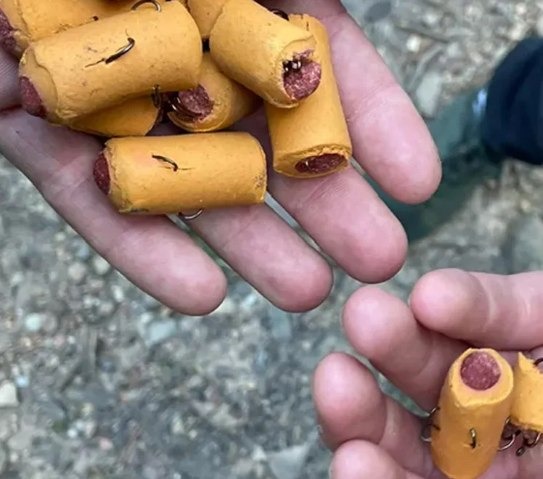ADVERTISEMENT
#### **3.6 Regular Veterinary Checkups**
Ensure your dog is regularly checked by a veterinarian, especially if they have a history of eating non-food items or ingesting harmful objects. A vet can provide tips on how to prevent this behavior and can also identify any internal damage caused by a foreign object if the dog does happen to ingest something dangerous.
### **4. Legal Implications and Actions Being Taken**
The discovery of fishhooks embedded in dog treats has led to a broader conversation about the legal implications of such actions. Deliberately placing harmful items on public trails or in areas frequented by pets is considered a criminal act in many places, as it poses a direct threat to the safety and well-being of animals. The responsible party could face charges ranging from animal cruelty to reckless endangerment.
Authorities are taking steps to increase awareness of these incidents and enforce laws that protect animals. Some of the measures being taken include:
– **Increased Surveillance:** Local authorities may implement more surveillance in public spaces, particularly areas where pets are frequently walked. Surveillance cameras or park rangers may be deployed to monitor activities and ensure the safety of animals.
– **Public Awareness Campaigns:** Animal welfare organizations and local governments are using social media, public service announcements, and community outreach programs to educate pet owners about the risks and encourage them to report suspicious activity.
– **Stronger Penalties for Animal Cruelty:** Efforts are being made to strengthen the legal penalties for animal cruelty in cases like this. Stricter fines and jail sentences for those caught harming animals could help deter these malicious acts.
### **5. Conclusion: A Call for Vigilance and Prevention**
The discovery of dog treats embedded with fishhooks on a popular trail is a stark reminder of the dangers that exist in seemingly safe outdoor spaces. Pet owners must remain vigilant, as the risk of harm from such malicious acts is real and significant. By being proactive, educating others, and working with local authorities, we can help ensure that our pets remain safe from such dangers and that public spaces remain free of harmful objects.
Ultimately, it is up to all of us – pet owners, local communities, and authorities – to take collective action to protect our furry companions. Vigilance, education, and reporting suspicious behavior can make a world of difference in preventing incidents like this from happening again. Our pets trust us to keep them safe, and it is our responsibility to do so.
